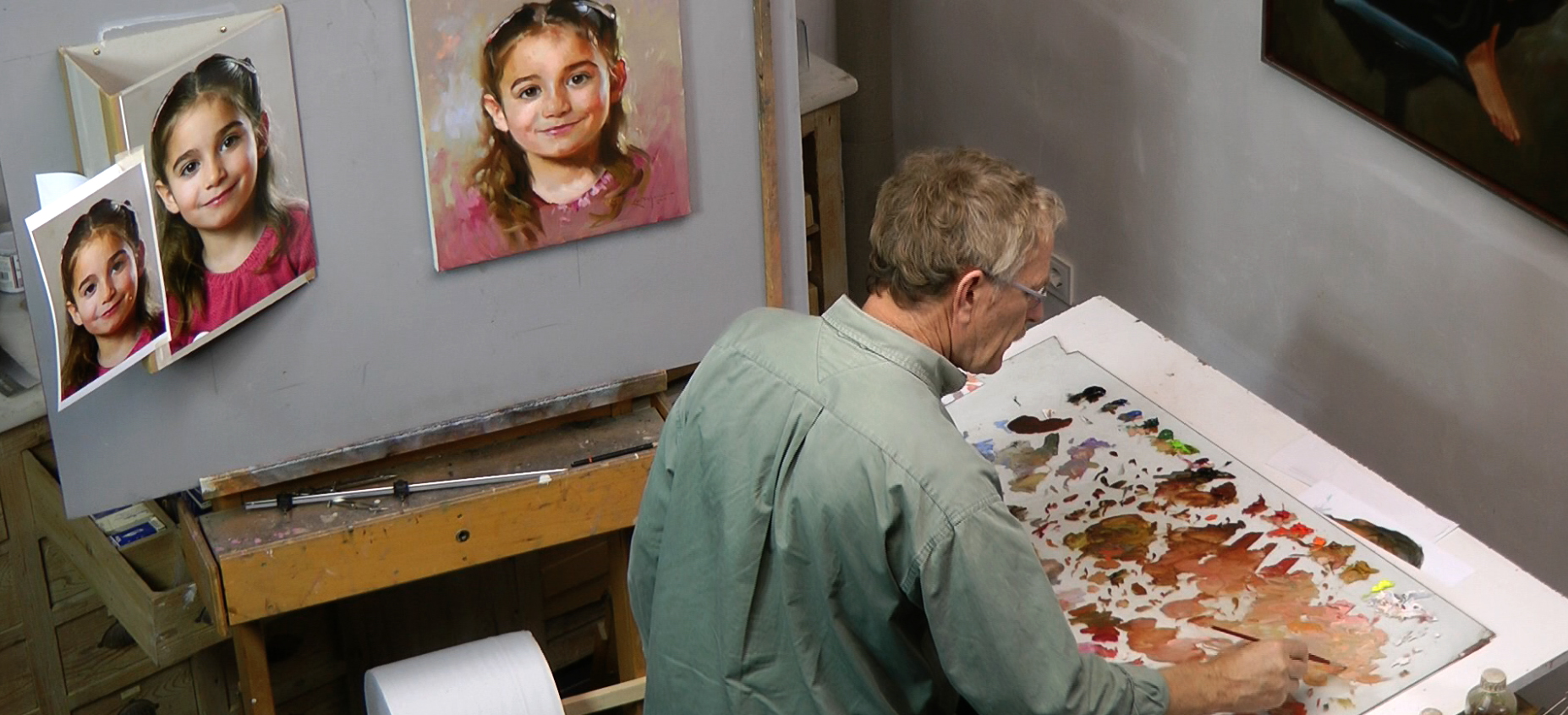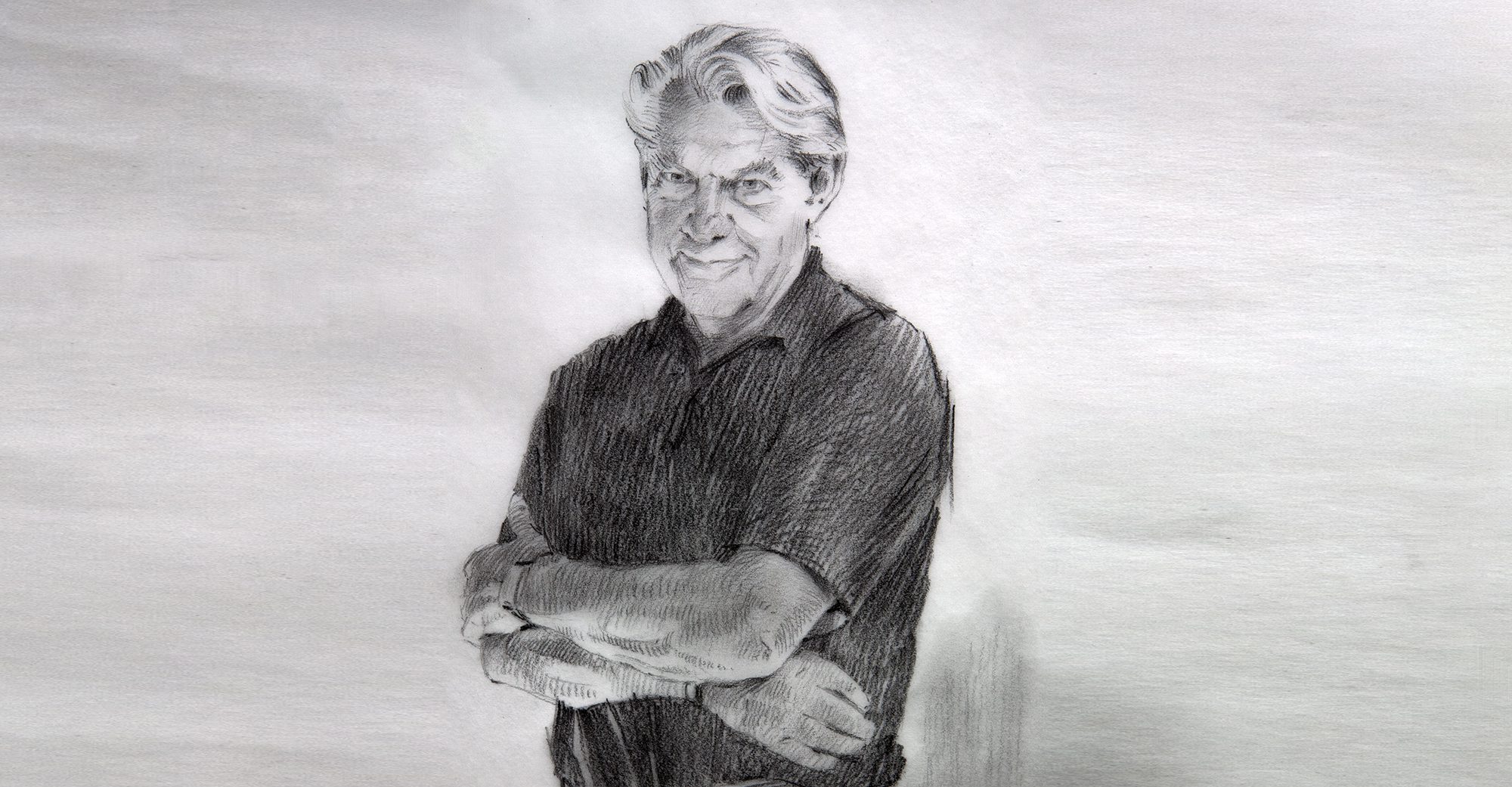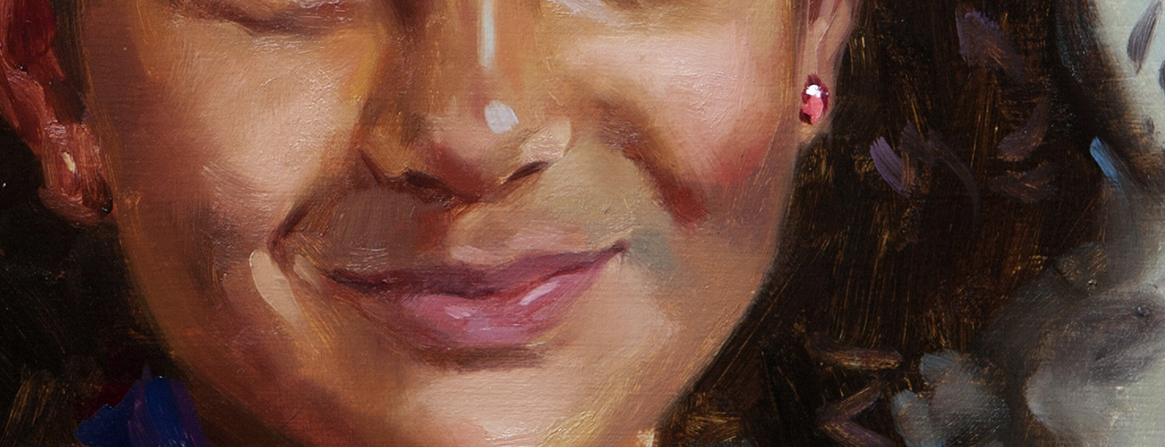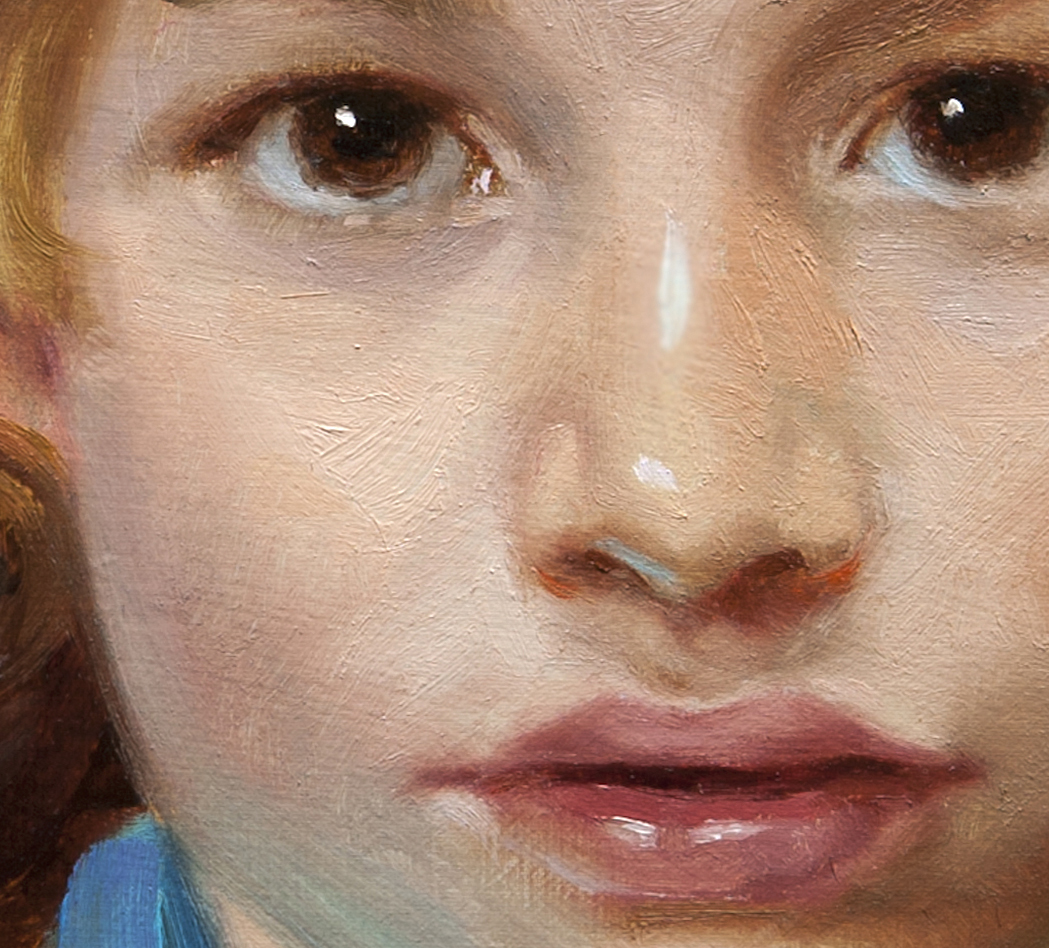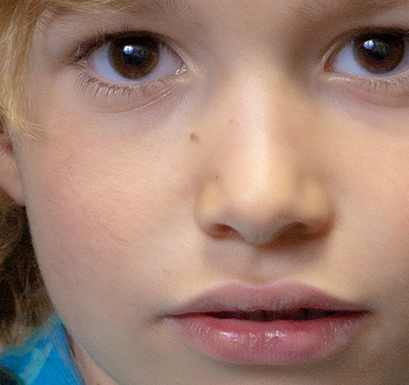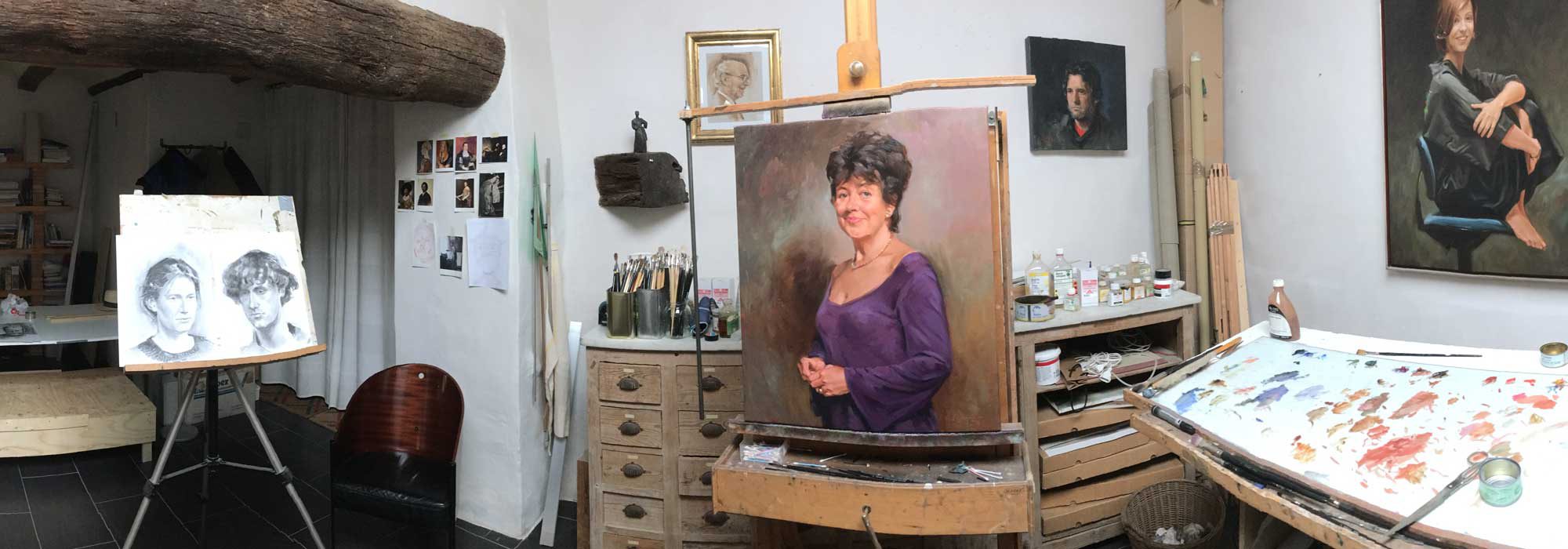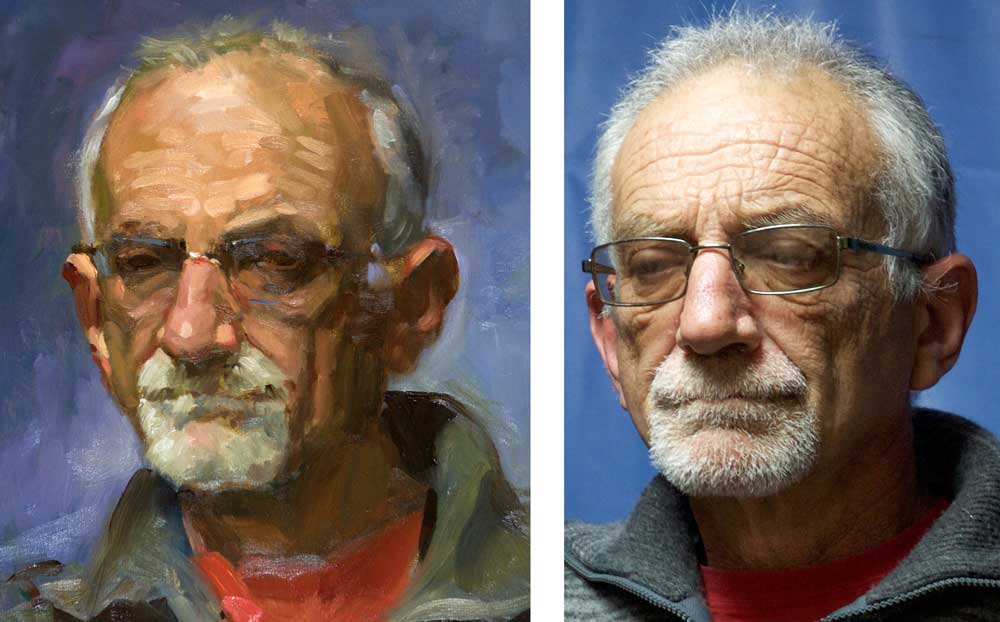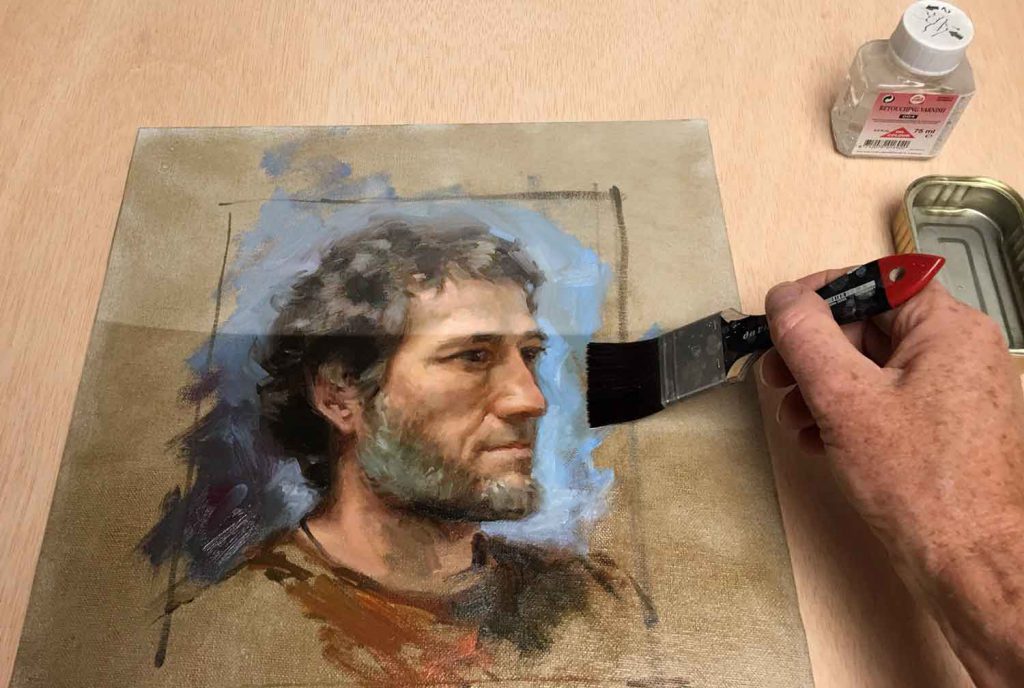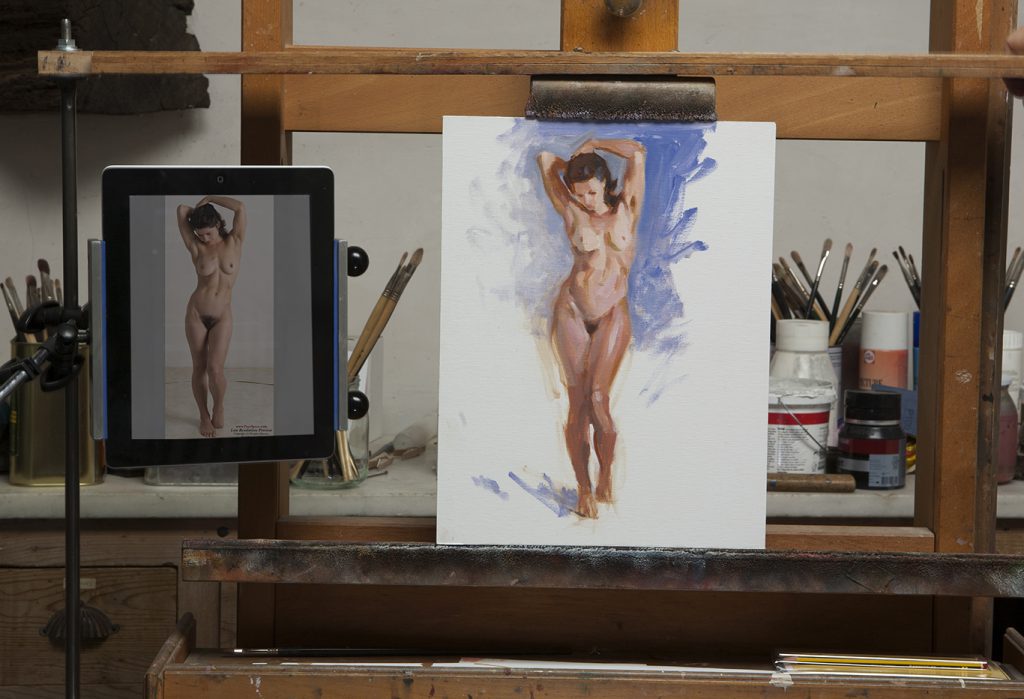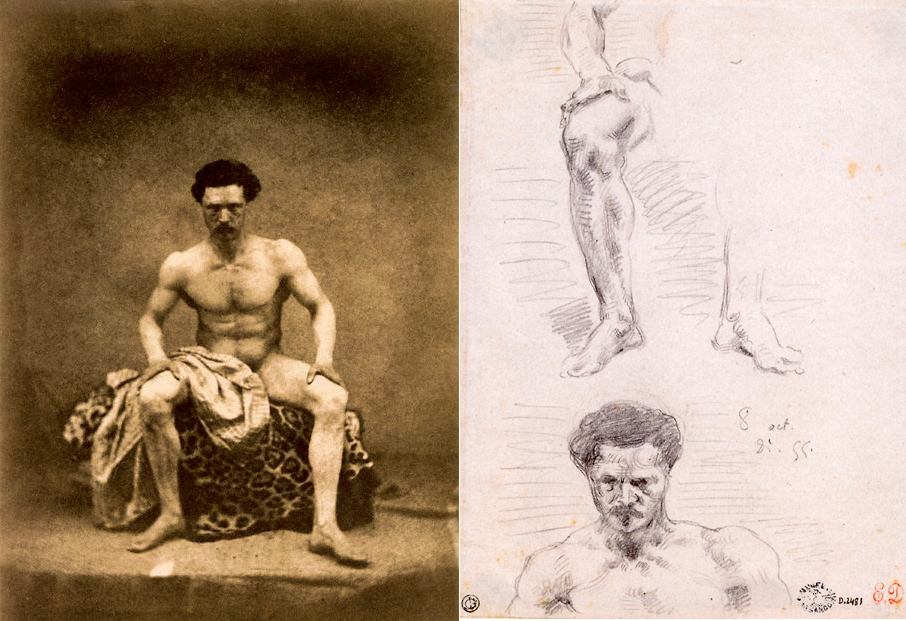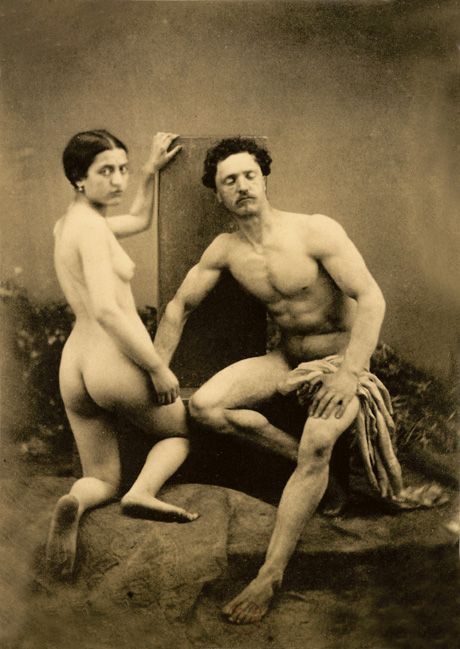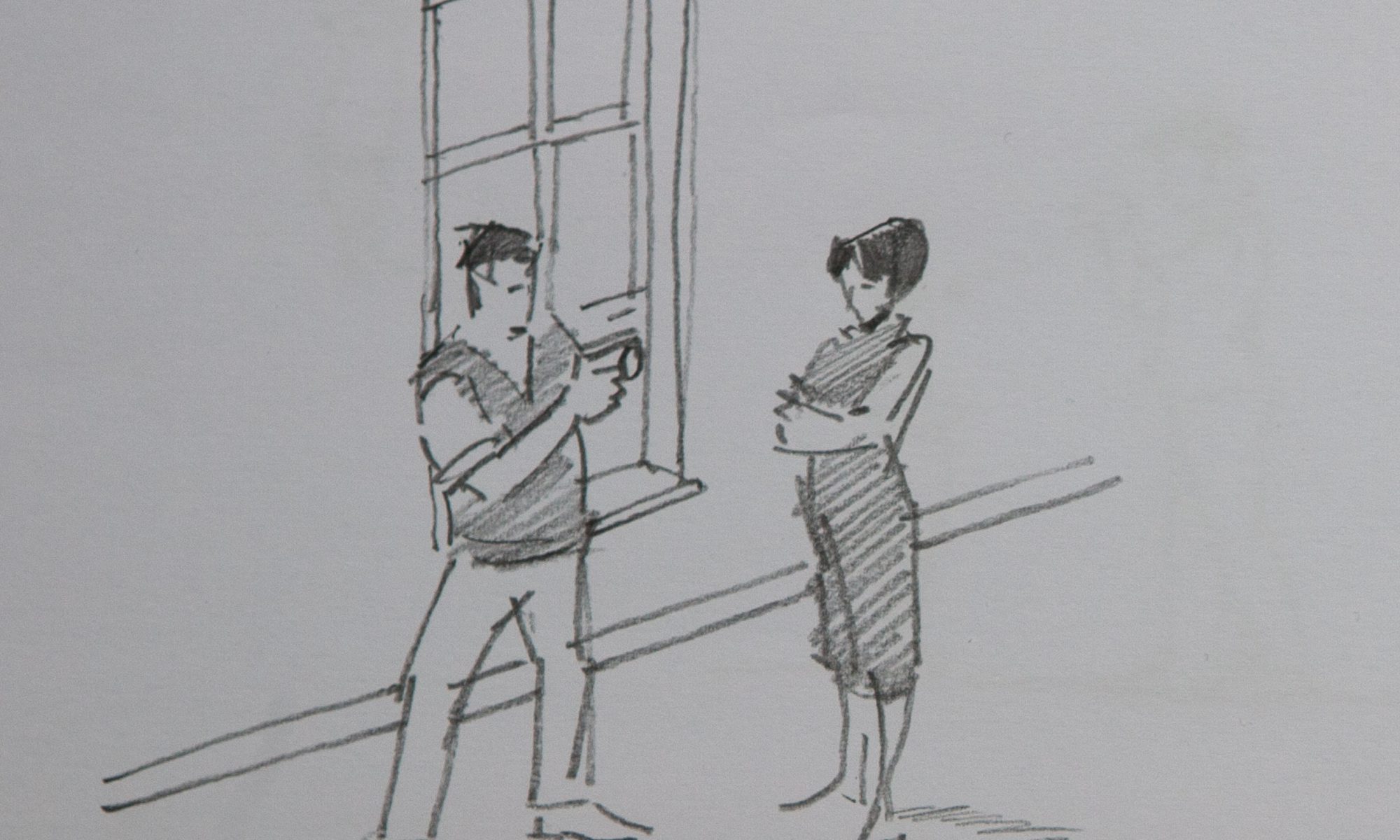More about photography.
As you have seen I use my professional photographer´s kit to make the pictures of my models. I must rely on good materials since portrait painting is my full-time profession. However, also with good amateur stuff you can make good pictures. For the beginner a few tips, some dos and don’ts. Let me start with a common mistake. Don´t use the flash on your camera. This flash blows away all the shadows. And shadows are fundamental in portrait painting: with good shadows you will get an easier grip on the likeness.

If you are a beginner keep the lighting simple. A window where no direct sunlight comes in is good for a simple lighting. Place yourself almost near the window and put your model in front of you. Take care that three thirds of the face is in the light.

Put your camera at the same level as the model´s head, unless you want to emphasize that the model looks up to you or looks loftily. Think about that.

Don´t get your camera too close to the model´s face because of the wide angle distortion: Big nose and small ears, not a very flattering picture. So keep some distance.

Don´t put your model so far away that the whole body fills your image if you only need the face. That is a waste of all the lost pixels.
In the future I will pay more attention to photography. Good photography is fundamental.
See also: Portrait painting lessons (1)
And: Contact with te model and photography.
